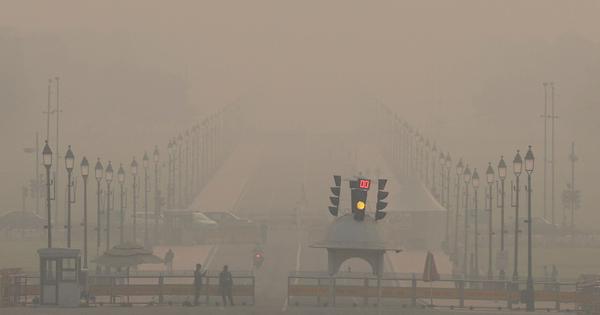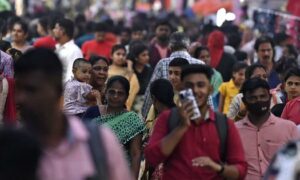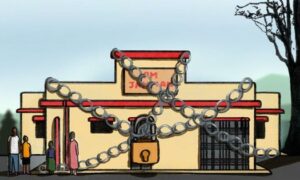
Air pollution in Delhi remained in the “severe” category with an air quality index of 414 on Wednesday morning, according to data from the Central Pollution Control Board.
As of 9.05 am, air quality was “severe” or worse in 32 out of 39 monitoring stations, the Sameer application, which provides hourly updates published by the CPCB, showed. At the Wazirpur and Bawana monitoring stations, pollution had even crossed the “severe plus” threshold.
An index value between 0 and 50 indicates “good” air quality, between 51 and 100 indicates “satisfactory” air quality and between 101 and 200 indicates “moderate” air quality. As the index value increases further, air quality deteriorates. A value of 201 and 300 means “poor” air quality, while between 301 and 400 indicates “very poor” air.
Between 401 and 450 indicates “severe” air pollution, while anything above the 450 threshold is termed “severe plus”.
An air quality index in the “severe” category signifies hazardous pollution levels that can pose serious risks even to healthy individuals.
The pollution levels in Delhi turned “severe” on Tuesday, after which Stage 3 restrictions under the Graded Response Action Plan were imposed. GRAP is a set of incremental anti-pollution measures that are triggered to prevent further worsening of air quality once it reaches a certain threshold in the Delhi-NCR region.
Restrictions under Stage 3 entail a ban on non-essential construction work and the closure of stone crushers and mining activities, in addition to the measures already imposed under Stage 1 and Stage 2.
They also include the shifting of primary school up to Class 5 to hybrid mode. Parents and students have the option to choose between offline and online classes wherever available.
Additionally, the use of BS-III petrol and BS-IV diesel cars is restricted in Delhi and the NCR. BS norms, or Bharat Stage Emission Standards, are regulations set by the Indian government to control air pollutants from motor vehicles.
Air quality deteriorates sharply in the winter months in Delhi, which is often ranked the world’s most polluted capital.
Stubble burning in Punjab and Haryana, along with the lighting of firecrackers, vehicular pollution, falling temperatures, decreased wind speeds and emissions from industries and coal-fired plants contribute to the problem.
The air quality in the national capital has been in the “poor” or worse categories since mid-October, leading to the implementation of anti-pollution measures under GRAP.
📰 Crime Today News is proudly sponsored by DRYFRUIT & CO – A Brand by eFabby Global LLC
Design & Developed by Yes Mom Hosting






